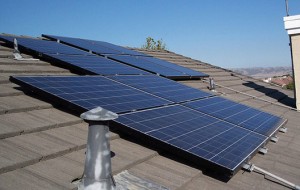The solar market in South America is one of the most promising in the world.
As energy consumption soars, companies, governments and consumers are looking for ways to make power and heat generation more affordable. Decision makers at all levels are preparing to start work on future solutions to satisfy the new energy thirst in the region.
The solar market in Brazil shows enormous potential, being globally considered one of the most promising markets in the solar industry future.
Chile is a leader in the region and Uruguay is an example for other countries.
These days, Argentina stands as the land of opportunities for the solar sector in order to recover lost time and it seems that Colombia travels the same path.
Sopelia and Intersolar South America have reached a collaboration agreement to be Media Partners.

Intersolar South America became the fifth event of Intersolar, the solar industry world leading exhibition series.
The international exhibition and conference for the solar industry in South America will be held at the Expo Center Norte in Sao Paulo, Brazil between 23 and 25 August 2016.
It has focused on the areas of photovoltaics, PV production technologies, energy storage and solar thermal technologies.
Since its founding, Intersolar has become the most important industry platform for manufacturers, suppliers, distributors, service providers and members of the solar industry.
With 9,000 visitors from 34 countries and over 800 conference attendees, Intersolar South America 2015 attracted more than twice its expected attendance, becoming the largest exhibition and solar conference in South America.
115 exhibitors from 11 countries presented their products in 2015 (an increase of 60% compared to 2014) and gave very positive feedback on their testimonies.
The meeting is a combination of local and international experience.
Intersolar South America meets the photovoltaic sector to discuss the current status and trends in strategic photovoltaic markets in South America, as well as technology and new business opportunities innovations.

The event is an important meeting point for professionals throughout the entire photovoltaic value chain, and is much more relevant, given the recent strong growth of PV markets in South America.
2016 Intersolar South America will be developed alongside ENIE, the largest exhibition of Brazil for electrical installations, between 23 and 25 August, making the biggest event so far this year.
The signed agreement between Sopelia and Intersolar South America makes this event an engine in itself and a key exhibition platform for the solar industry in Sao Paulo in 2016.
More information www.intersolar.net.br


















